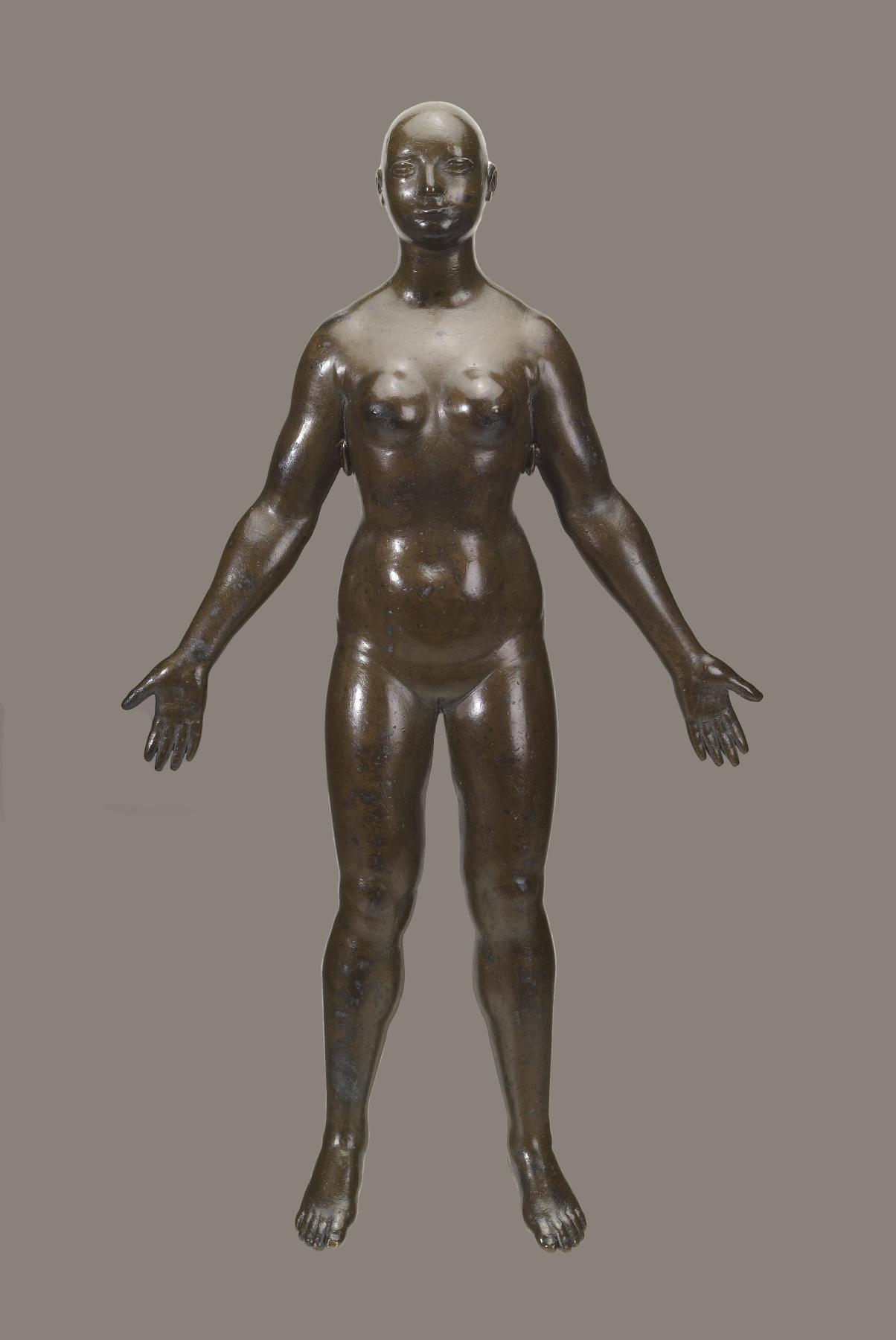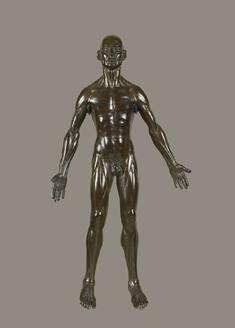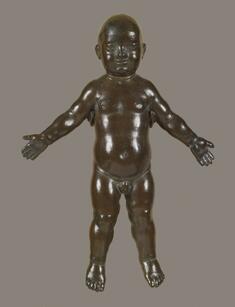Anatomical Figure of a Woman
(Renaissance Europe )
This figure is part of a "family" of three figures thought to have been made for a physician so that his patients could point to what hurt. The figures were not meant to stand. Their feet are angled as they would be if they were lying down. In the 1600s, people did not take their clothes off for a doctor. A well-bred woman would have blushed even to describe a part of her body, but she could point to it.
Provenance
Provenance (from the French provenir, 'to come from/forth') is the chronology of the ownership, custody, or location of a historical object. Learn more about provenance at the Walters.
San Giorgi, Rome [date and mode of acquisition unknown]; Henry Walters, Baltimore [date and mode of acquisition unknown]; Walters Art Museum, 1931, by bequest.
Exhibitions
| 2012 | Touch and the Enjoyment of Sculpture: Exploring the Appeal of Renaissance Statuettes. The Walters Art Museum, Baltimore. |
| 1995 | The Allure of Bronze. The Walters Art Gallery, Baltimore. |
Conservation
| Date | Description | Narrative |
|---|---|---|
| 5/4/1970 | Treatment | examined for condition; cleaned |
| 9/10/1974 | Treatment | coated |
Geographies
Germany, Augsburg (Place of Origin)
Measurements
H: 11 5/8 in. (29.6 cm)
Credit Line
Acquired by Henry Walters
Location in Museum
Accession Number
In libraries, galleries, museums, and archives, an accession number is a unique identifier assigned to each object in the collection.
In libraries, galleries, museums, and archives, an accession number is a unique identifier assigned to each object in the collection.
54.317












